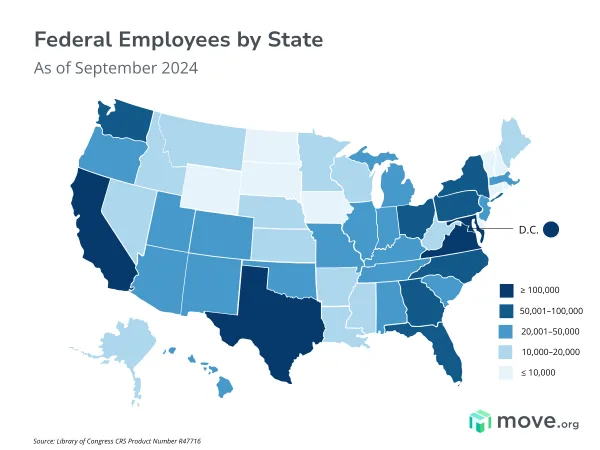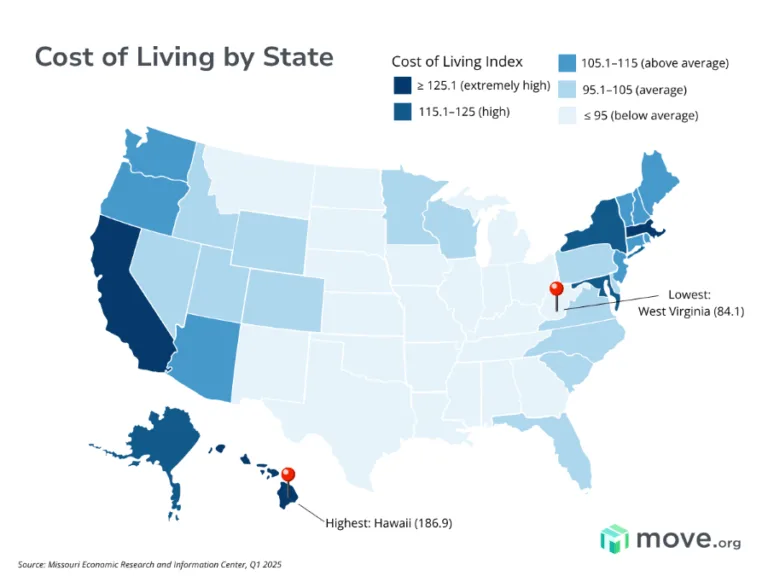Earlier this year, the current administration sought to reduce the number of people employed by the US government. As of October 2025, more than 200,000 federal employees—nearly 9% of the federal workforce—had lost their jobs. Another 90,000 are expected to be removed from their positions by the end of the year.
But that's just part of the story. Federal funds have also been cut this year, affecting people whose salaries were paid through government grants or contracts. The true number of people who have lost their jobs this year due to federal changes could be significantly higher than 200,000. And the government shutdown threatens even more positions.
So far, approximately 77% of the people who lost their jobs worked at just eight departments or agencies:
- Department of Defense: 55,582 people
- Treasury Department: 30,267 people
- Department of Agriculture: 21,564 people
- Health and Human Services: 13,448 people
- Veterans Affairs: 12,702 people
- US Postal Service: Nearly 10,500 people
- US Agency for International Development: 9,985 people
- Department of Interior: 9,700 people
Where do/did these federal workers live?
It's hard to say exactly where the affected workers were living when they lost their jobs, but we can make some educated guesses. Federal employees live and work in all 50 states, but the majority live in DC, California, Virginia, Maryland, and Texas.
People working for the Department of Defense likely live in Virginia. Those working for the Department of Health and Human Services tend to live in Maryland, and more than 1 in 4 federal workers in California are employed by Veterans Affairs.
States with the majority of federal workers also have some of the highest costs of living, with California and Maryland landing in the top six.
According to our 2025 survey of 1,000 recent movers, people are most likely to move to seek a lower cost of living. Funds get tight after a job loss, and it can be tough to quickly find a suitable job in today's market. It makes sense that ex-federal workers may need to move to a more affordable area to save money.
Moving for work is the fifth most common reason for moving and could be another reason why this population would change zip codes.
The federal reduction in force has been going on all year. So why is a winter moving spike anticipated?
Back in February, the current administration gave federal employees the option to voluntarily resign in exchange for continued pay and benefits through September 30. It was dubbed the "Fork in the Road" buyout, and more than 150,000 federal workers took the offer.
Now that the September 30 deadline has passed, it's crunch time. People who haven't been able to find suitable work may be extra motivated to move to a more affordable area over the next few months.
If you live in or are planning to move to heavily affected areas, the potential exodus of so many federal workers could hit your wallet. A gainfully employed population supports the local economy by allowing small businesses to flourish. If people (and their money) leave, businesses may close. This can lead to fewer jobs for locals, higher prices as competition decreases, and a diminished quality of life as there are fewer things to do and enjoy in the area.
If you live in an affected and are getting ready to move, you may encounter a price surge. Late fall and winter is usually the off season for moving, and prices are a little more affordable during this time. As demand increases, so do moving prices.
First, we want to recognize that losing your job is a difficult situation, period. We've been there.
We're not political or career experts, so we don't have all the big-picture answers. But we do know a thing or two about moving. So, if you're a former federal worker who's planning to move soon due to budget concerns, here's our best advice:
- Prioritize states with a lower cost of living. A good rule of thumb is to stay away from coastal states and focus on southern and midwestern states. See map above.
- Move out of the city. Although there are certainly some high-brow rural areas in the US, the cost of housing, gas, and other expenses typically decreases the further you get from a major city.
- Consider areas with low unemployment. It's a hopeful sign that you'll be able to find work.
- Downsize. Whether you're looking to rent or buy, going with something smaller tends to be the more affordable option. Watch out for lofty ceilings and unnecessary rooms — they cost a lot to heat and cool.
- Consider renting a truck rather than a moving container. It's the cheaper option but a little less convenient because you'll have to step up or use a ramp when loading and unloading your belongings, and you can't store it until you're ready.
- Get free moving boxes. There's no sense in buying what you can get for free.
- Get rid of or sell stuff you don't really need. Less furniture and fewer boxes means a smaller moving truck or container, and that could save you thousands of dollars.
- Shop around for moving services. We've done a lot of the legwork for you, so check our guides and reviews. Here's a good place to start: The Best Cheap Moving Companies
Please reach out if you have any moving questions or would like to share your story with our readers.



